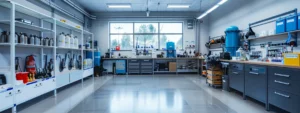Clogged drains are a common frustration for many homeowners, often leading to costly repairs. Instead of relying on harsh chemicals, eco-friendly drain unclogging methods offer safe and effective solutions to maintain your plumbing. This article will explore natural ingredients like baking soda and vinegar, the benefits of hot water techniques, and the effectiveness of a salt and vinegar mix. By applying these methods, homeowners can not only resolve drain issues but also protect their health and the environment. Embracing these strategies is essential for keeping cast iron pipes in good condition while avoiding harmful detergents.
Eco-Friendly Drain Maintenance: Key Takeaways for Homeowners
- Eco-friendly methods like baking soda and vinegar effectively address drain clogs safely
- Regular preventive measures can significantly reduce the chance of future drain blockages
- Using natural ingredients minimizes the impact of harsh chemicals on plumbing systems and the environment
- Tools like drain augers help tackle stubborn clogs without resorting to chemical solutions
- Maintenance routines promote healthier plumbing and extend the lifespan of drain systems
Understanding Eco-Friendly Drain Unclogging Methods
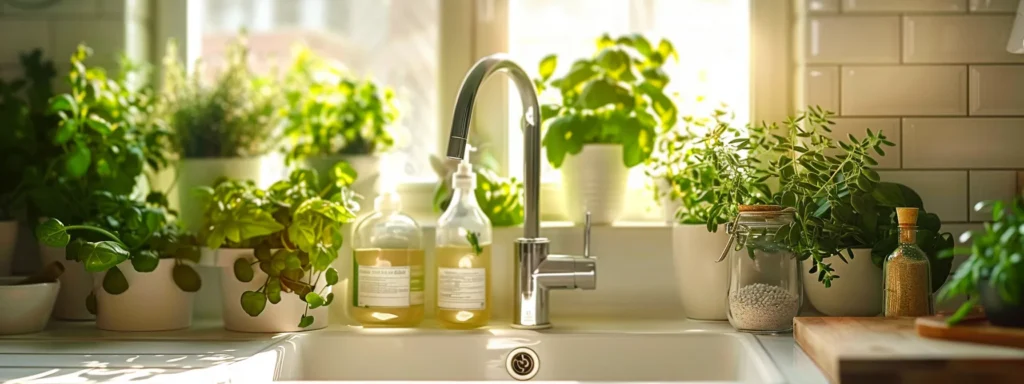
Homeowners seeking to address clogs in their drains may find that eco-friendly methods are effective and less harmful to the environment compared to chemical drain cleaners. Utilizing natural ingredients such as baking soda and vinegar can break down debris without damaging the pipes, providing a sustainable solution for managing drain issues. Alternatively, professional drain cleaning services can offer assistance for more persistent problems.
A common cause of drain clogs is the accumulation of grease and food particles in kitchen sinks. Regularly using a drain stopper can prevent these substances from entering the pipes, thereby reducing the likelihood of future blockages. This simple preventive measure can save homeowners from costly pipe repair services.
For those persistent clogs that do not respond to home remedies, eco-friendly commercial products may be a viable alternative. Many of these products utilize enzymatic or bacterial formulas to dissolve clogs without the harsh effects associated with traditional chemical drain cleaners. Consequently, they are safer for both the plumbing system and the surrounding environment.
If a clog continues despite best efforts, consulting with professionals may be necessary. Experienced technicians offer services that not only address current blockages but also educate homeowners about maintaining clear drains in the future. Implementing preventive measures after resolving a clog can significantly enhance the longevity of plumbing systems while minimizing environmental impact.
Clogged drains often stem from common problems lurking in the pipes. To keep them flowing freely, understanding these causes and taking preventive measures is key.
Common Causes of Clogged Drains and How to Prevent Them
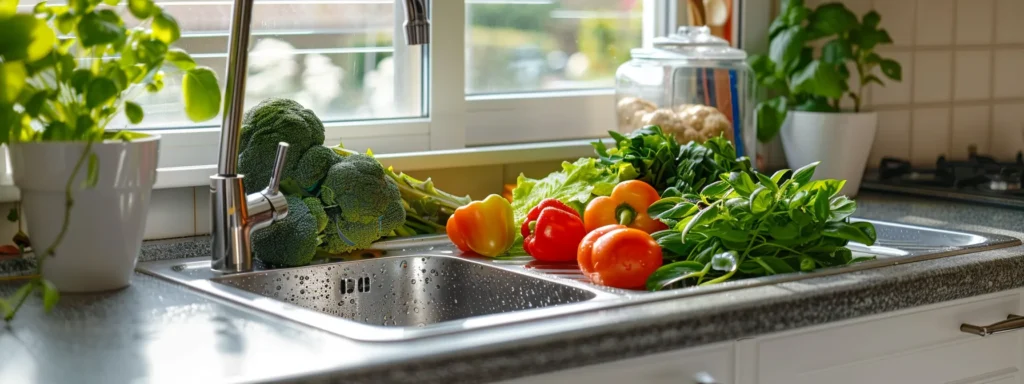
One common cause of clogged drains is the accumulation of debris, including food particles and grease, particularly in kitchen sinks. Homeowners can mitigate this issue by using drain stoppers to prevent these substances from entering the pipes. This straightforward action may significantly decrease the frequency of clogs and the need for more invasive unclogging methods.
Another contributor to drain clogs involves the buildup of hair and soap scum in bathroom drains. Regular cleaning of sink strainers and the periodic flushing of drains with tap water helps maintain clear pathways. Such simple preventive measures ensure smooth drainage and reduce the reliance on harsh chemicals like sodium hydroxide.
For more stubborn clogs, a drain auger serves as an effective tool. This device can reach deep into pipes, allowing homeowners to physically remove debris without resorting to chemical solutions. Using a drain auger can protect both the plumbing system and the environment from the damaging effects associated with chemical drain cleaners.
When attempting to resolve clogs, safety measures such as wearing eye protection are critical, especially when using any mechanical or chemical methods. Homeowners should always exercise caution to prevent injury while addressing drain issues. By integrating these practices into routine maintenance, residents can enhance the functionality of their plumbing systems sustainably.
Understanding the common causes of clogged drains sheds light on a frustrating problem. Now, consider the power of baking soda and vinegar—simple ingredients that can clear the way and bring relief.
Safe DIY Solutions to Unclog Drains Using Baking Soda and Vinegar
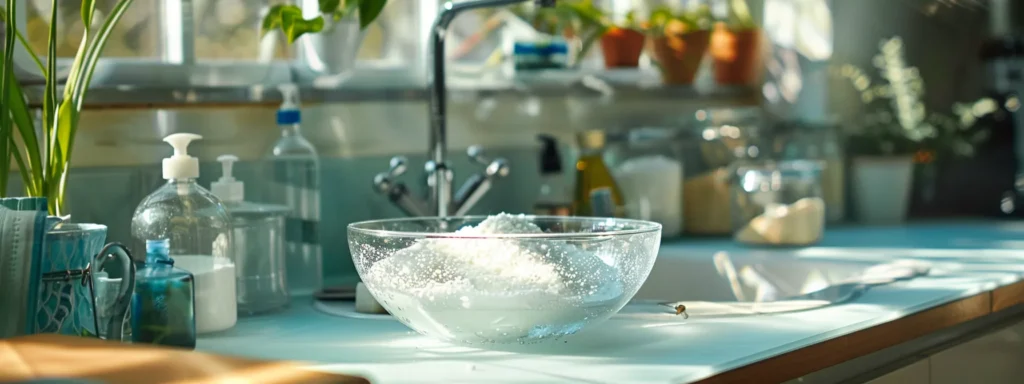
Preparing to use baking soda and vinegar involves gathering essentials from the pantry and ensuring the right conditions for maximum effectiveness. This mixture can effectively break down clogs while maintaining the health of septic tanks. After unclogging, implementing maintenance tips can prevent odors and keep drains clear. Understanding these steps will empower homeowners to maintain their plumbing systems sustainably.
Steps to Prepare for Using Baking Soda and Vinegar
To effectively unclog drains using baking soda and vinegar, homeowners should first gather the necessary materials. This includes a bucket to collect any residual water or debris and pliers to tightly secure any leaking pipes. Ensuring these tools are at hand prepares the homeowner for a smooth process, minimizing unexpected interruptions during the unclogging method.
Next, it is vital for homeowners to remove any excess water from the sink or drain before applying the baking soda and vinegar mixture. This step prevents overflow and allows the natural ingredients to work more effectively against stubborn drain clogs. Taking care of these preparatory steps will significantly ease the unclogging procedure while promoting a more environmentally friendly approach to maintaining clear drains.
How to Use This Mixture Effectively
To effectively use a mixture of sodium bicarbonate and vinegar for unclogging drains, homeowners should first pour a generous amount of baking soda directly into the drain. Following this, they should immediately add vinegar to the drain, which will cause a fizzing reaction. This reaction can help dislodge debris and buildup within the pipes. For optimal results, it is beneficial to cover the drain with a cloth or a plug to keep the mixture in contact with the clog for several minutes.
After allowing the baking soda and vinegar to work on the clog, homeowners can flush the drain with hot water. This step is crucial as it helps to wash away loosened material and ensures that the drain is clear. In areas such as basements, where clogs might be more stubborn, using a brush to manipulate the underlying grime can enhance effectiveness. Homeowners may find this eco-friendly approach to drain cleaning not only reduces the reliance on chemical alternatives but also promotes a cleaner and safer plumbing system.
Tips for Maintenance After Unclogging
After successfully unclogging drains with a mixture of baking soda and vinegar, maintaining drain health becomes paramount. Regularly flushing drains with hot water can help clear any remaining soap residue that can contribute to future clogs. Additionally, homeowners can use lemon juice to add a pleasant scent while combating grease and buildup, effectively promoting a cleaner and fresher drainage system.
Implementing routine checks for loose screws in sink traps and ensuring they are secure can prevent leaks, which may lead to corrosion and further complications. Home improvement efforts should also include periodic inspections of all plumbing fixtures and preventive measures, such as installing strainers, to capture debris before it reaches the pipes. These practices foster longevity in plumbing systems while minimizing the chances of recurring clogs.
Baking soda and vinegar can work wonders, yet they are just the beginning. There are more natural ingredients waiting in your home that can help clear drains effectively.
Utilizing Natural Ingredients for Drain Cleaning
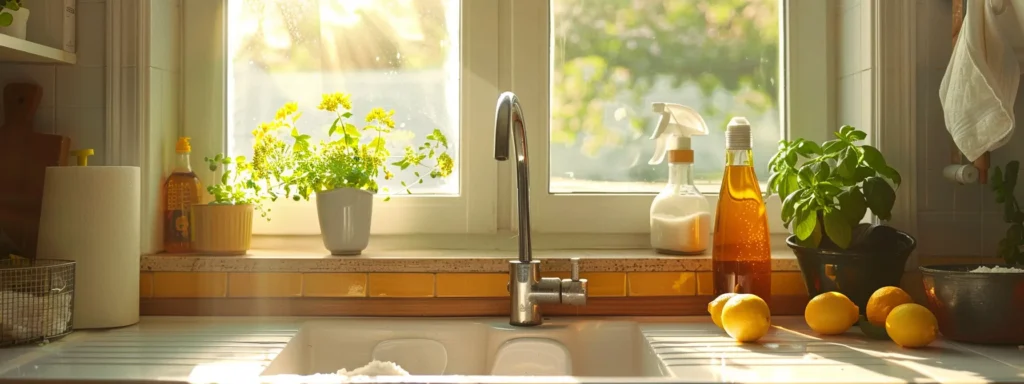
The power of baking soda and lemon juice serves as an effective combination for drain cleaning, helping to break down clogs with natural ingredients. Utilizing common household items reduces the need for harsh chemicals like hydrochloric acid, providing a safer approach. Alternative ingredients, such as borax and even a clothes hanger, can also aid in unclogging drains, ensuring a thorough and environmentally friendly clean.
These methods offer practical insights for homeowners seeking sustainable solutions, emphasizing the value of integrating accessible materials into routine maintenance for effective drain management.
The Power of Baking Soda and Lemon Juice
Baking soda and lemon juice create a powerful duo for homeowners aiming to address drain clogs naturally. When combined, these ingredients produce a fizzy liquid that aids in breaking down debris and grease, making it an effective, eco-friendly option for maintenance. Homeowners can tackle minor clogs without the need to resort to chemical cleaners, promoting a safer environment for both their properties and local sewage systems.
For a do-it-yourself solution, homeowners can utilize a screwdriver to remove any sink trap assemblies that might be blocking drainage. After preparing the area, pouring the mixture of baking soda and lemon juice into the drain can enhance the unclogging process. This method not only ensures that metal pipes remain free from corrosion but also maintains the overall health of the plumbing system, offering a sustainable approach to regular drainage issues.
Benefits of Using Common Household Ingredients
Using common household ingredients for drain cleaning presents numerous benefits for homeowners. These eco-friendly alternatives, such as baking soda and vinegar, are safe for septic systems and help break down clogs without introducing harmful chemicals into the environment. Additionally, these ingredients are readily available, making them a convenient choice for quick and cost-effective solutions to maintain clear drains.
The effectiveness of natural methods extends beyond just unclogging drains; they also contribute to the overall health of plumbing systems. For instance, using a plunger in combination with baking soda can effectively clear stubborn blockages while safeguarding pipes from damage. Employing techniques such as pressure washing the floor around drainage areas further enhances maintenance efforts and can help prevent future clogs caused by debris accumulation.
| Household Ingredients | Benefits |
|---|---|
| Baking Soda | Breaks down grease and debris; safe for septic systems. |
| Vinegar | Works as a natural disinfectant; helps dissolve clogs. |
| Lemon Juice | Provides a pleasant scent and helps combat buildup. |
| Salt | Acts as a natural abrasive to scrub pipes clean. |
Alternative Natural Ingredients for Unclogging
Homeowners can consider alternative natural ingredients for unclogging drains that effectively minimize environmental impact. For instance, a mixture of salt and baking soda can be poured directly into the drain and followed by hot water, creating an abrasive action that helps dislodge debris. This combination not only prevents future clogs but also promotes a safer plumbing system.
An iron drain snake serves as another practical tool for tackling stubborn clogs. This flexible device can reach deep into pipes, removing obstructions without the need for harsh chemicals. Utilizing a bottle to combine vinegar and baking soda before deploying the drain snake can enhance the unclogging process, offering a comprehensive and eco-friendly approach to drain maintenance.
Natural ingredients can work wonders, but sometimes, heat is the answer. Next, explore how using hot water can safely clear stubborn blockages with ease.
Techniques for Safe Drain Unclogging With Hot Water
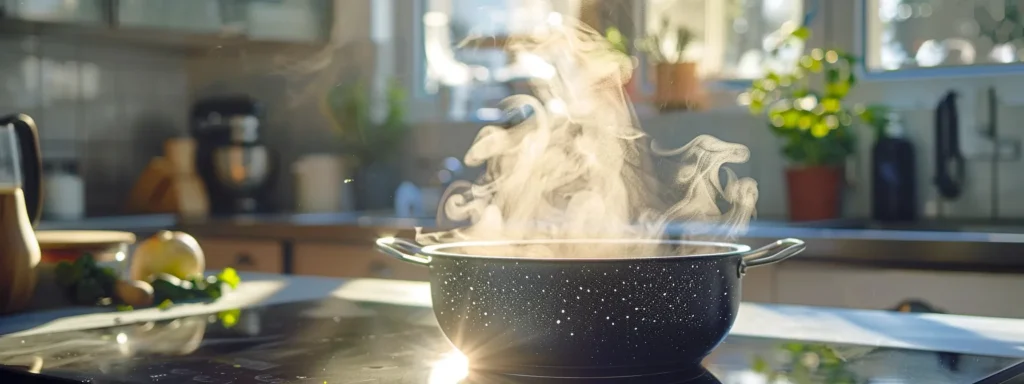
Boiling water serves as an effective method for unclogging drains by utilizing the heat to break down grease and debris, offering a chemical-free solution compared to harsh chemical drain cleaners. Precautions must be taken to prevent damage to pipes or injuries during this process. Additional tips will ensure optimal results, making this method both safe and efficient for homeowners dealing with clogged drains.
Benefits of Using Boiling Water
Boiling water serves as a powerful ally in the fight against clogged drains, effectively loosening grease and debris within plumbing pipes. When hot water is poured directly into the drain, it can break down stubborn buildups, offering an eco-friendly solution that eliminates the need for harsh chemical cleaners. This method not only clears blockages but also aids in maintaining optimal flow in the plumbing system.
Using boiling water is also beneficial for periodic maintenance, as it can prevent future clogs by flushing out residual soap scum and food particles. For homeowners mindful of their plumbing health, incorporating this technique into their routine can enhance leak detection capabilities by allowing for clearer observation of flow issues. Overall, boiling water represents a simple and effective method for ensuring drains remain unclogged and functional, safeguarding both the environment and the plumbing system.
Precautions to Take When Using Hot Water
When using hot water for drain cleaning, homeowners must take precautions to protect their pipes from potential damage. Pouring boiling water directly into a drain can be effective for clearing clogs, but it may also cause stress on older or weak pipes, particularly those made from PVC. To mitigate this risk, it is advisable to gradually introduce hot water, starting with warm water and increasing the temperature slowly, ensuring the plumbing system can handle the heat without sustaining damage.
Another important consideration involves the interaction of hot water with other substances in the drain, such as hydroxide and sulfuric acid from harsh chemical cleaners. Mixing these substances with boiling water can create dangerous reactions, leading to harmful fumes or even splatter. Instead, homeowners should stick to safe, natural alternatives like vinegar for unclogging drains, which, when combined with hot water, can effectively dissolve buildups without presenting health hazards or damaging the plumbing system.
Additional Tips for Optimal Results
To achieve optimal results when using hot water for unclogging drains, homeowners should consider the type of plumbing materials in their systems. For example, cast iron pipes may react differently to boiling water compared to PVC pipes. Gradually introducing hot water by starting with warm water and slowly increasing the temperature allows for safe pressure management and minimizes the risk of pipe damage, particularly in older systems.
It’s also beneficial to incorporate natural alternatives when dealing with persistent clogs. While many may reach for products like Drano, these can be harsh on plumbing and the environment. Instead, combining hot water with vinegar can create a powerful mixture that effectively loosens debris while being safe for septic systems. By adhering to these guidelines, homeowners can maintain a healthier plumbing system while effectively managing drain issues.
- Start with warm water and gradually increase to boiling to prevent damage.
- For cast iron pipes, be cautious with temperature changes.
- Combine hot water with vinegar for an effective, eco-friendly solution.
- Avoid harsh chemicals like Drano to protect your plumbing.
- Regular maintenance can prevent future clogs and prolong your plumbing’s life.
Hot water can clear many blockages, but there are other methods worth considering. Next, salt and vinegar offer a unique blend that may just surprise you with its effectiveness.
Exploring the Efficacy of Salt and Vinegar Mix

Creating a salt and vinegar solution offers homeowners an effective method to unclog drains, including bathtubs and showers. This combination works to break down mineral deposits and oil residue without harsh chemicals. Understanding when to apply this method can lead to long-term benefits such as safer plumbing systems and reduced reliance on petroleum-based products. Each detailed segment will discuss how to create and use this solution, appropriate usage scenarios, and the lasting advantages of natural drain cleaners.
How to Create and Use Salt and Vinegar Solution
To create a salt and vinegar solution for unclogging drains, homeowners should combine one cup of salt with one cup of vinegar in a plastic container. This mixture will start to foam, producing a reaction that can effectively break down debris and mineral deposits in the plumbing. Pour the solution directly into the affected drain and allow it to sit for at least 30 minutes, letting the foam work on the clog while minimizing pressure on the pipes.
After the waiting period, residents should flush the drain with hot water to remove the loosened debris and achieve better drainage. This two-step process not only targets common clogs found in showers and sinks but also promotes a safer environment compared to chemical solutions. By regularly using this method, homeowners can maintain clear drainage while preventing future blockages.
| Step | Action |
|---|---|
| 1 | Combine one cup of salt with one cup of vinegar in a plastic container. |
| 2 | Pour the mixture into the drain and let it sit for 30 minutes. |
| 3 | Flush the drain with hot water to clear the debris. |
When to Use This Method
The salt and vinegar mix serves as an excellent option for addressing minor clogs, particularly in bathroom drains that are often prone to hair and soap scum buildup. Homeowners should consider using this method when they’re facing slow drainage or minor blockages that do not require professional intervention. It’s a sustainable approach that can effectively deter clogs before they escalate into larger issues that might necessitate expensive solutions like hydro jetting or video camera inspections.
Long-Term Benefits of Using Natural Drain Cleaners
Using natural drain cleaners, such as the salt and vinegar mix, offers homeowners significant long-term benefits. These eco-friendly methods not only effectively unclog a drain, minimizing reliance on commercial products that contain harsh chemicals, but they also help protect plumbing systems from damage associated with corrosive ingredients. Homeowners will find that a consistent approach to using natural cleaners promotes healthier pipes, reducing the frequency of future clogs and costly plumbing repairs.
Moreover, integrating natural drain cleaning solutions into regular maintenance routines contributes to safer living environments. Homeowners can feel confident knowing that using common household ingredients significantly reduces harmful waste entering the local water system. To get started with this approach, they can easily reach out via their email address for tips and tricks, ensuring they receive helpful replies regarding effective drain maintenance.
- Using salt and vinegar mix directly targets minor clogs in drains.
- Natural cleaners protect plumbing systems from corrosive damage.
- Regular use reduces reliance on harsh commercial drain cleaners.
- Eco-friendly options lead to safer waste management in local water systems.
- Homeowners can easily seek advice or insights via email for successful maintenance.
The mix of salt and vinegar shows promise, but the work does not end there. Next, it’s vital to learn how to care for your drains to ensure they perform well for years to come.
Steps to Maintain Your Drains for Long-Lasting Performance
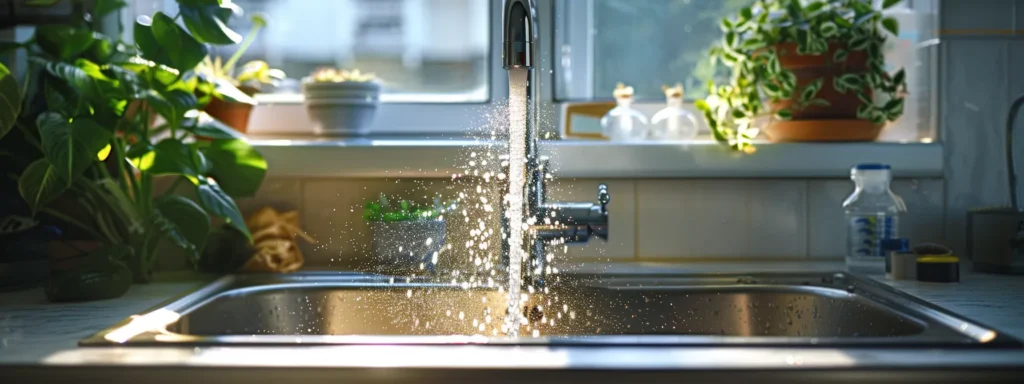
Regular cleaning routines are essential for maintaining clear drains and ensuring long-lasting performance. Homeowners should implement best practices for preventing future clogs, such as using sodium-based solutions to dissolve buildup. Additionally, utilizing helpful tools for ongoing drain care can enhance the effectiveness of these efforts, leading to a healthier plumbing system and reduced reliance on harsh chemicals.
Regular Cleaning Routines to Follow
Implementing regular cleaning routines is vital for homeowners to maintain clear drains and enhance the longevity of their plumbing systems. Performing simple tasks, such as flushing drains with hot water weekly, can effectively eliminate residue and buildup from everyday activities. These proactive measures not only reduce the risk of clogs but also hinder the progression of blockages that may require more invasive solutions.
Incorporating natural cleaning agents like baking soda and vinegar into a monthly maintenance schedule provides an eco-friendly method for keeping drains clear. Homeowners can follow this up by checking and cleaning sink traps and strainers regularly to prevent debris from entering the plumbing system. By prioritizing these straightforward practices, homeowners can enjoy a more efficient plumbing experience and minimize reliance on chemical drain cleaners, all while protecting the environment.
Best Practices for Preventing Future Clogs
Preventing future clogs requires consistent effort and the implementation of effective practices. Homeowners should regularly use drain strainers to capture hair, food particles, and other debris before they enter the plumbing system. Additionally, flushing drains with hot water at least once a week can help dissolve buildup, ensuring smooth drainage and reducing the risk of blockages over time.
Incorporating natural cleaners such as baking soda and vinegar into a monthly maintenance routine is another effective strategy. This combination effectively breaks down residue without the need for harsh chemicals. Homeowners can also perform regular inspections of their plumbing fixtures to identify and address potential issues early, ensuring long-lasting performance of their drains:
| Preventive Practices | Benefits |
|---|---|
| Use drain strainers | Captures debris and prevents clogs. |
| Flush drains with hot water weekly | Dissolves buildup and maintains flow. |
| Use baking soda and vinegar monthly | Breaks down residue sustainably. |
| Conduct regular plumbing inspections | Identifies issues before they escalate. |
Helpful Tools for Ongoing Drain Care
Homeowners can significantly benefit from utilizing specific tools designed for ongoing drain care to maintain plumbing systems and prevent clogs. A drain auger, for instance, is an effective device that reaches deep into pipes to remove stubborn obstructions without the need for harsh chemicals. By keeping a drain auger on hand, individuals can address minor issues promptly, reducing the chance of larger problems developing over time.
Additionally, incorporating drain strainers into sinks and tubs is a simple yet impactful solution for minimizing buildup. These easy-to-install tools capture hair, food particles, and other debris, keeping unwanted materials out of the plumbing system. Regular use of strainers not only helps to keep drains clear but also extends the lifespan of plumbing fixtures, illustrating an important aspect of eco-friendly drain maintenance.
Conclusion
Eco-friendly drain unclogging methods offer homeowners effective and sustainable solutions for maintaining plumbing systems. By utilizing natural ingredients like baking soda, vinegar, and salt, individuals can tackle clogs without harming their pipes or the environment. Preventive measures, such as using strainers and regular maintenance routines, further enhance drainage efficiency and reduce reliance on harsh chemicals. Embracing these eco-friendly strategies not only promotes a healthier home environment but also contributes to the overall well-being of local ecosystems.


